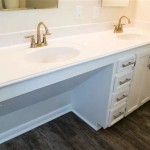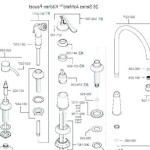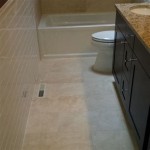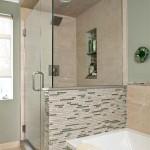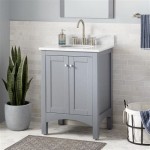Bathroom Sink Drain Vent: Ensuring Proper Drainage and Preventing Sewer Gas
A properly functioning bathroom sink relies on more than just a clear drainpipe. A crucial, often overlooked component is the drain vent. This vital part of the plumbing system allows air to enter the drainpipe, facilitating smooth drainage and preventing sewer gases from entering the home. Understanding the function, components, and maintenance of the bathroom sink drain vent is essential for maintaining a healthy and functional plumbing system.
The Importance of Proper Venting
The primary purpose of a bathroom sink drain vent is to equalize pressure within the drainage system. When water flows down the drain, it creates a vacuum behind it. Without a vent, this vacuum could pull water out of the P-trap, the U-shaped pipe located beneath the sink designed to block sewer gases from entering the bathroom. A properly functioning vent allows air to enter the drainpipe, preventing the vacuum and ensuring the P-trap remains full of water, effectively sealing out unpleasant and potentially harmful sewer gases.
Beyond preventing sewer gas intrusion, adequate venting also promotes efficient drainage. The introduction of air into the drainpipe prevents a "glug-glug" effect that can occur when water struggles to flow past trapped air. This ensures wastewater flows quickly and smoothly, preventing slow drains and potential backups.
Components of a Bathroom Sink Drain Vent
The bathroom sink drain vent system typically consists of several key components, working together to ensure proper function. The vent pipe itself is typically a PVC or ABS pipe, connected to the drain line just downstream of the P-trap. This pipe runs vertically, either within the wall cavity or exposed, and eventually connects to the main vent stack, a larger pipe that vents the entire plumbing system. The vent stack typically terminates through the roof, allowing sewer gases to escape safely outdoors.
Another important component is the air admittance valve (AAV), also known as a cheater vent or studor vent. In situations where running a traditional vent pipe to the roof is difficult or impractical, an AAV can be used. This valve contains a spring-loaded mechanism that opens to allow air into the drainpipe when negative pressure occurs, then closes tightly to prevent sewer gases from escaping. While AAVs are a convenient solution in certain situations, they should be installed according to local plumbing codes and may not be suitable for all applications.
Maintaining and Troubleshooting Your Sink Drain Vent
Regular maintenance is crucial for ensuring the long-term functionality of your bathroom sink drain vent. While the system is designed for durability, blockages can occur due to debris, insect nests, or even frost buildup in colder climates. One of the most common signs of a blocked vent is slow drainage in the sink. Other signs include gurgling sounds coming from the drain, or a strong sewer gas odor in the bathroom.
If a blockage is suspected, several troubleshooting steps can be taken. First, visually inspect the visible portions of the vent pipe for any obvious obstructions. If no blockage is found, a plumber's snake can be used to clear the vent pipe. The snake should be inserted through the vent opening on the roof or through an access point in the wall cavity. For particularly stubborn blockages, or if you are uncomfortable working with plumbing components, contacting a licensed plumber is recommended.
Preventing Future Problems
Prevention is always the best approach when it comes to plumbing issues. Regularly flushing the drain with hot water can help prevent the buildup of soap scum and other debris that can contribute to clogs. Avoid pouring grease or other fatty substances down the drain, as these can solidify and restrict airflow in the vent pipe. In colder climates, ensure adequate insulation around exposed vent pipes to prevent freezing and potential blockages.
By understanding the function, components, and maintenance of your bathroom sink drain vent system, you can ensure proper drainage, prevent unpleasant odors, and maintain a healthy and functional plumbing system for years to come. Addressing potential issues promptly and taking preventative measures will save you time, money, and the inconvenience of dealing with more significant plumbing repairs down the line.

How To Vent A Toilet Sink And Shower Drain

Vent Options For Plumbing Drains Fine Homebuilding
Can You Drain A Sink Into Toilet Vent Quora

Vent Options For Plumbing Drains Fine Homebuilding

Plumbing Vents 101 What You Need To Know Innovative Pros Llc

Plumbing Vents The Ultimate Guide Hammerpedia
Can You Vent A Toilet Line Through Sink Drain Quora

What Is A Plumbing Vent Pipe For Richmond Home Inspector

How Does Your Bathroom Sink Drain And Vent Pipes Work

Figuring Out Your Drain Waste Vent Lines Dummies
Related Posts
